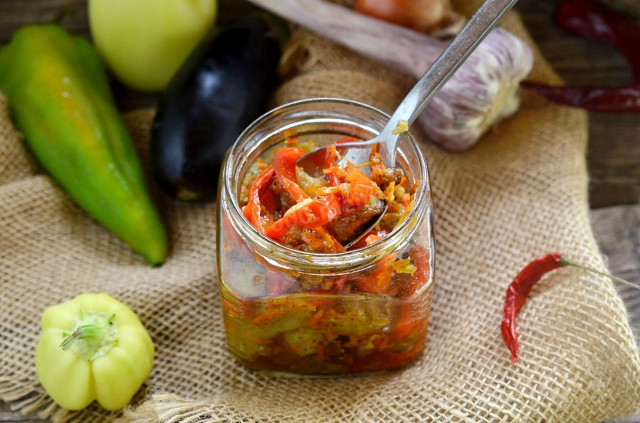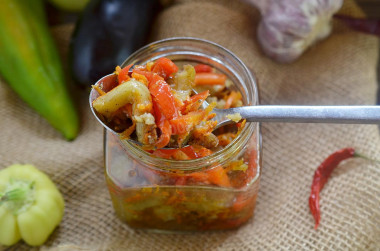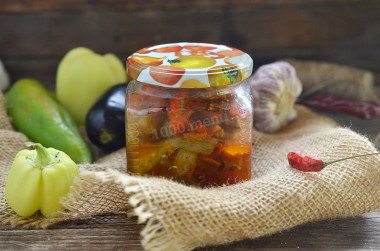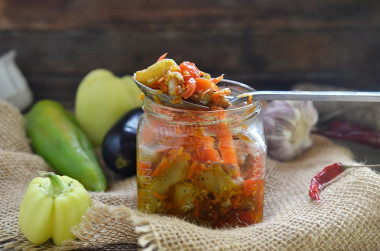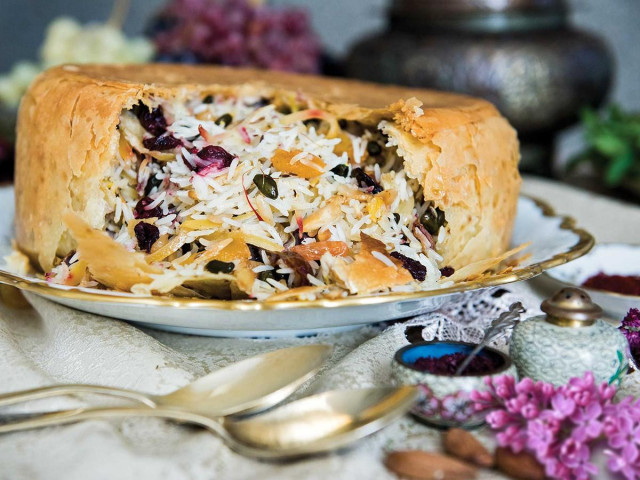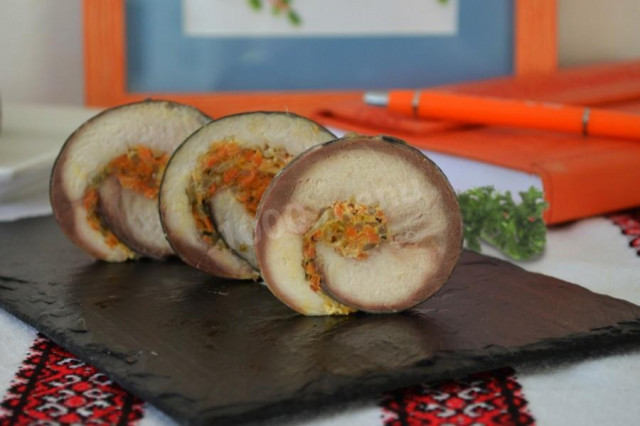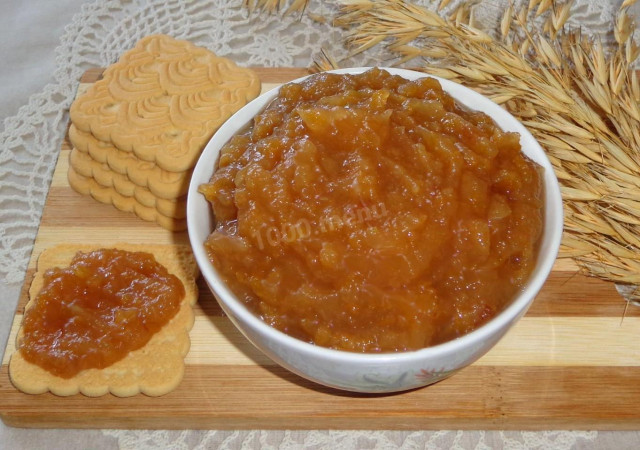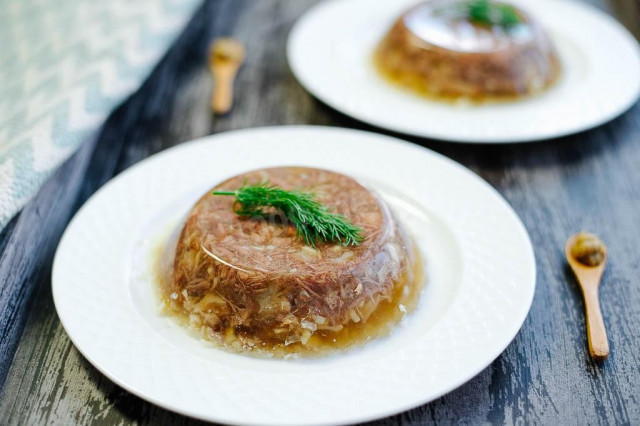Composition / ingredients
Step-by-step cooking
Step 1:
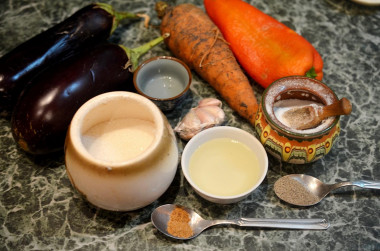
How to make eggplant in Korean for winter? Prepare all the necessary products. Take ground eggplants - such fruits are usually small in size and have a matte skin.
Step 2:
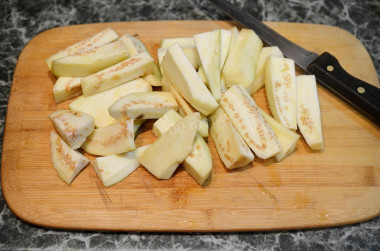
Wash the eggplants, remove the stalks, peel and cut into cubes.
Step 3:
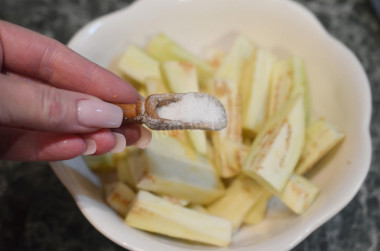
Salt the eggplants (literally a pinch of salt will be enough) and leave for 15 minutes - during this time they will give up their bitterness. Squeeze the eggplants well.
Step 4:
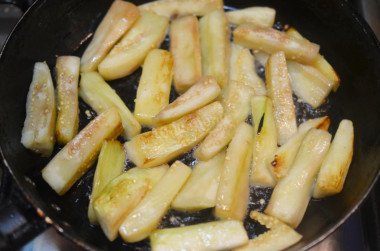
Heat the vegetable oil in a frying pan, fry the eggplants until golden brown - this usually takes about 10 minutes.
Step 5:
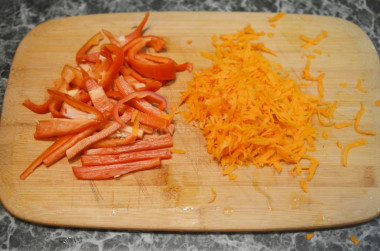
Remove the seeds and stalks from the pepper, peel the carrots. Cut the pepper into thin strips, and grate the carrots - a grater for Korean carrots and a regular large grater will do.
Step 6:
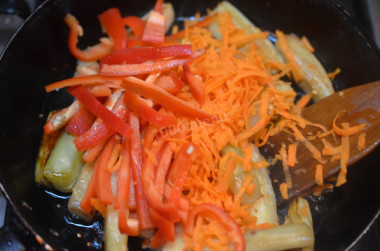
Add carrots and pepper to the eggplant, mix.
Step 7:
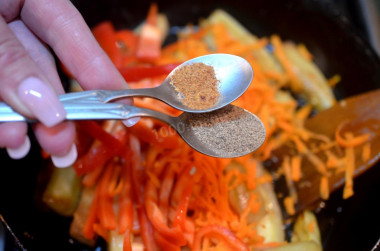
Add black pepper and Korean carrot seasoning.
Step 8:
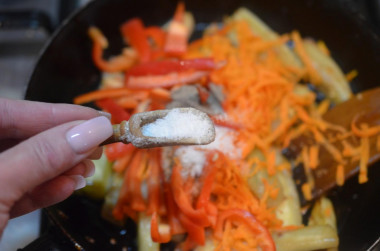
Add sugar and remaining salt.
Step 9:
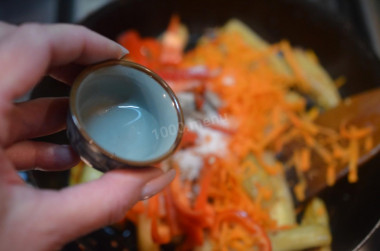
Pour in the vinegar. This recipe uses 6-9% table vinegar, so if you have an essence, dilute it in a ratio of 1:8.
Step 10:
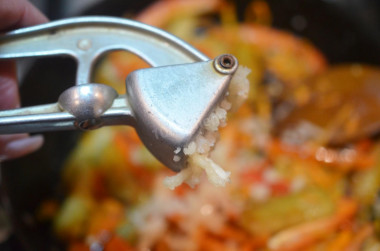
Add chopped garlic. I put the cloves through the press, but you can grate the garlic or chop it with a knife. Mix everything together.
Step 11:
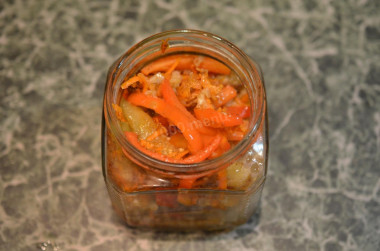
Sterilize the jars in any convenient way. I put jars with a small amount of water in the microwave for 5-7 minutes. But you can sterilize them in the oven at 100 degrees for about 30 minutes or hold them over steam. It is enough to boil the lids for 5 minutes. Put eggplants with vegetables in jars. If you are not preparing for the winter, then store the salad in the refrigerator for about a week.
Step 12:
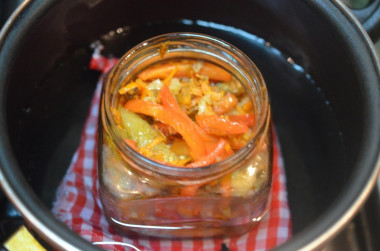
For winter harvesting, sterilize the workpiece. Put a towel folded in several layers on the bottom of the pan, put a jar of eggplants, cover with a lid. Fill a saucepan with water up to the shoulders of the jar, sterilize 500 ml cans over moderate heat - 30 minutes, 1 liter - 1 hour. Close the lids tightly or roll up. Store in a cool place.
Step 13:
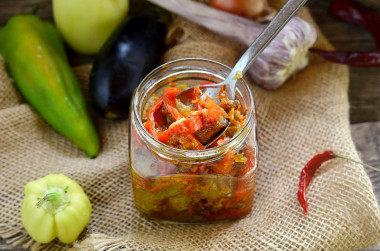
Bon appetit!
Remember that spices such as salt, sugar, as well as vinegar and its substitutes are used in recipes for winter preparations not only for taste, but primarily as preservatives. Therefore, in no case should you reduce the concentration of salt and sugar, and also replace vinegar (essence) with a weaker concentration than indicated in the recipe, otherwise vinegar (salt / sugar) will not show their preservative properties and the workpiece will be spoiled.
Since the degree of salinity, sweetness, bitterness, sharpness, acid, burning is individual for everyone, always add spices, spices and seasonings, focusing on your taste! If you put some of the seasonings for the first time, then keep in mind that there are spices that it is especially important not to shift (for example, chili pepper).
Caloric content of the products possible in the composition of the dish
- Sweet pepper - 27 kcal/100g
- Carrots - 33 kcal/100g
- Dried carrots - 275 kcal/100g
- Boiled carrots - 25 kcal/100g
- Eggplant - 24 kcal/100g
- Garlic - 143 kcal/100g
- Ground black pepper - 255 kcal/100g
- Granulated sugar - 398 kcal/100g
- Sugar - 398 kcal/100g
- Wine vinegar (3%) - 9 kcal/100g
- Vinegar 9% - 11 kcal/100g
- Balsamic vinegar - 88 kcal/100g
- Apple vinegar - 14 kcal/100g
- Vinegar - 11 kcal/100g
- Vegetable oil - 873 kcal/100g
- Salt - 0 kcal/100g

